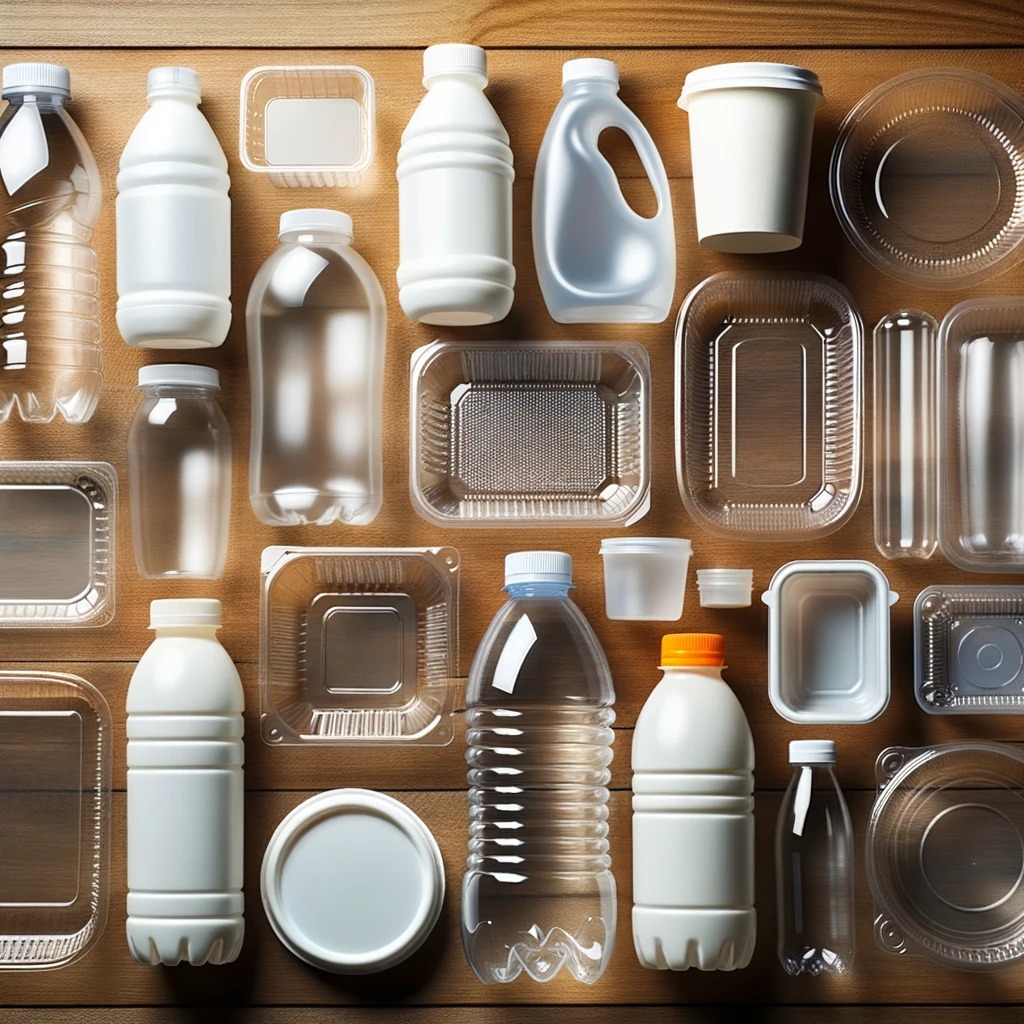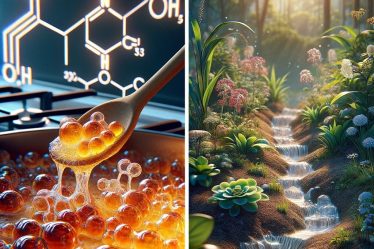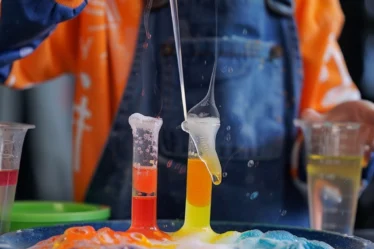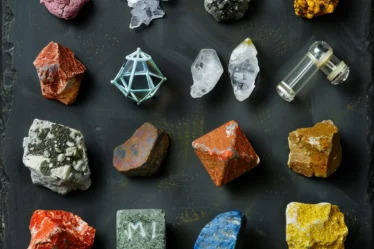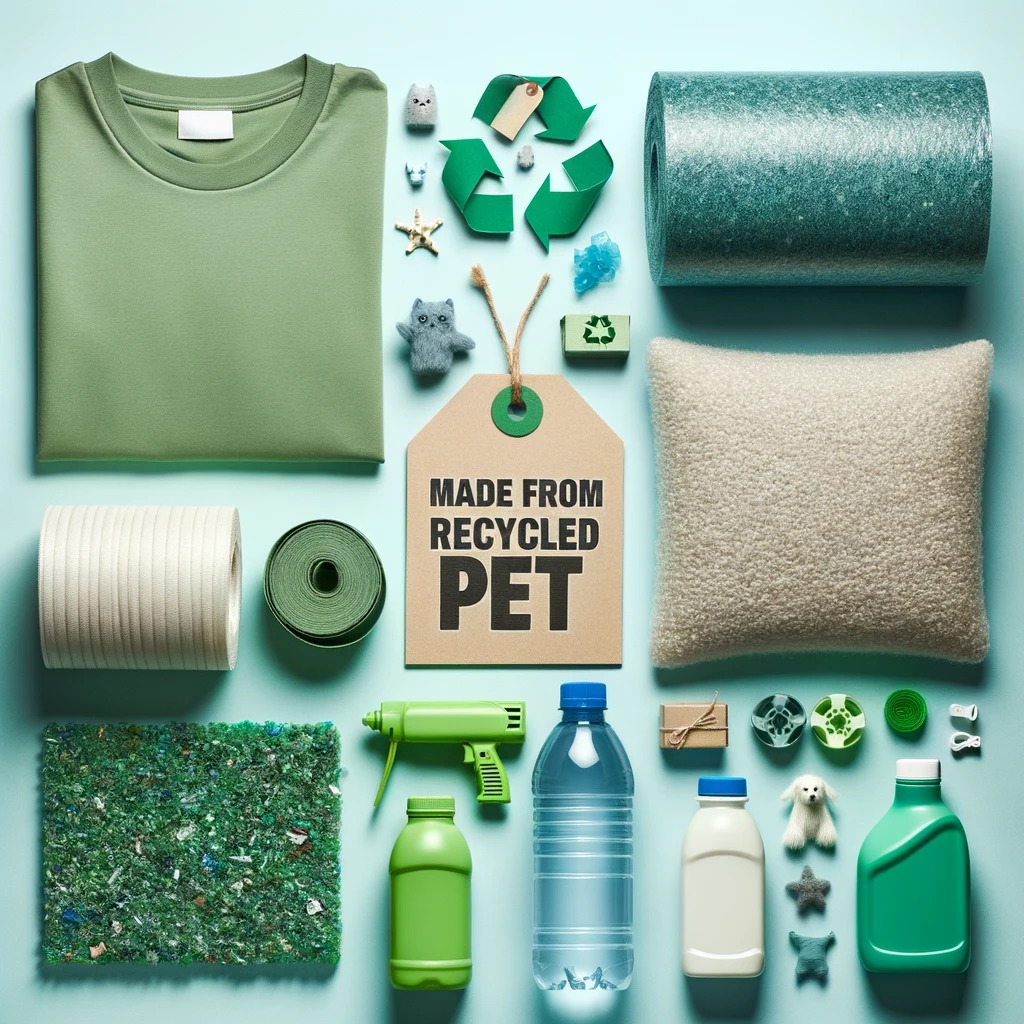
Polyethylene Terephthalate, or PET, is a transparent, strong, and lightweight plastic widely recognized under the recycling code #1. Used extensively in packaging, PET is also found in textiles, engineering, and multiple consumer products. This guide unpacks the chemistry of PET, its production process, and its lifecycle, including recycling and sustainability aspects.
Here’s a glimpse of what you’ll learn:
- The chemical structure of PET and its synthesis from monomers.
- The range of PET’s uses from consumer goods to industrial applications.
- The processes that convert PET into textiles and packaging.
- Effective methods for PET recycling and the material’s life cycle.
- Advancements in PET technology and their impact on product development.
This guide provides the necessary insights for those immersed in chemistry classes, tutors creating content for chemistry lessons, or anyone interested in the materials that are part of our daily lives.
Are you interested in other subjects? We’ve got great free study guides for Biology, English, French, and Music.
Chemical Structure and Properties of PET
Polyethylene Terephthalate, commonly known as PET, is a thermoplastic polymer with a range of beneficial properties owing to its unique chemical structure. This chapter will break down the molecular arrangement of PET and its resulting features that make it a preferred material in multiple applications.
Breaking Down the Molecular Composition of PET Plastics
The PET polymer is synthesized through a process known as polycondensation, where the monomers ethylene glycol and terephthalic acid undergo a reaction to form the repeating units of this sturdy material. The structural formula of PET is (C10H8O4)n, where ‘n’ represents the number of repeating units that can vary, affecting the polymer’s molecular weight and properties.
Key Properties That Make PET a Preferred Material
- Strength and Durability: PET’s robust nature makes it resistant to impact, which is essential for the longevity of consumer products.
- Thermal Stability: It can withstand temperature variations, which is crucial for food and beverage packaging.
- Chemical Resistance: PET is resistant to water and many chemical solvents, making it suitable for storing various kinds of substances.
- Transparency: Its clear appearance is desirable for packaging, allowing consumers to view the contents.
- Recyclability: One of PET’s most significant advantages is its ability to be recycled, reducing its environmental footprint.
Impact on Industries
PET has become an integral part of the textile industry, where it is spun into fibers for clothing. In the packaging sector, its role is indispensable, providing a safe, non-reactive container for beverages and foods. Moreover, in the engineering field, PET is often combined with glass fiber to create materials that have enhanced properties suitable for specialized applications.
In the following chapters, we will explore the manufacturing processes of PET, its uses, and its lifecycle, including its pivotal role in recycling and sustainability efforts.
Versatile Uses of PET: Industry and Consumer Applications
PET is a versatile plastic that has permeated various facets of industry and commerce due to its robustness and adaptability. This section outlines the primary uses of PET, illustrating its significance in our daily lives.
Want to expand your chemistry horizons? Our World of Chemistry offers a plethora of free educational blogs.
Textile Industry
In textiles, PET is transformed into polyester fibers, a mainstay in the fashion industry. These fibers are valued for their resilience, dye affinity, and wrinkle resistance, making them ideal for clothing and upholstery. Polyester’s ability to retain shape and withstand wear and tear has cemented its place as a preferred fabric.
Packaging Solutions
PET’s role in packaging cannot be overstated. Its excellent barrier properties against gases and moisture help preserve the quality and freshness of food products. PET is commonly used in making bottles for water and soft drinks and containers for a wide variety of food products, from condiments to peanut butter.
Medical and Pharmaceutical Sector
The material’s non-reactivity and transparency make it suitable for medical and pharmaceutical packaging, ensuring that medications remain uncontaminated and visible for verification.
Engineering and Automotive Fields
PET is also combined with glass fiber to create engineering resins that are light yet strong. These are used in automotive parts, electrical components, and various mechanical applications where metal components are traditionally used.
Future Applications
Research is underway to expand PET’s applications further, including its potential in 3D printing technologies and as a substrate for flexible electronics.
For tutors and students, understanding the widespread applications of PET, from textiles to packaging and beyond, is crucial. These insights can enhance chemistry lessons, offering real-world chemistry examples at work.
Are you looking for a chemistry tutor? Enter “chemistry tutor Glasgow” or “chemistry teacher Sheffield” on your preferred tutoring platform, such as meet’n’learn, to find a teacher who can meet your specific needs.
If you thrive in group learning environments, search “chemistry classes London” or “chemistry lessons Manchester” online to discover local schools offering chemistry lessons.
Ethanol and Alcohols in chemistry, Fermentation, and how Beer is Made.
How PET is Made: Overview of the Manufacturing Processes
PET manufacturing involves several key steps, from the initial chemical synthesis to the final product formation. This section provides a concise overview of PET’s journey during its production.
The Synthesis Process: How PET Polymers Are Created
The production of PET starts with the chemical reaction between ethylene glycol and terephthalic acid. These substances undergo polycondensation under high temperatures and vacuum conditions to form the PET polymer. The resulting substance is a molten polymer that can be shaped during subsequent processes.
PET Production Techniques: Extrusion and Pelletizing Explained
Once synthesized, the PET polymer is extruded and cut into small pellets. These pellets are the primary form of PET traded and used in further manufacturing processes. Pelletizing is a crucial step as it facilitates the distribution of PET to manufacturers globally.
Shaping the World: How PET Products Are Formed
The pellets are then melted and processed into the final products. Common techniques include:
- Injection Molding: Used for creating complex shapes, such as containers or mechanical parts.
- Blow Molding: Specifically for making bottles, a preform is created using injection molding and then blown into its final shape.
- Extrusion Blow Molding: Combines extrusion and blowing to create hollow objects like bottles.
- Thermoforming: PET sheets are heated and formed into shapes using molds and vacuum.
Ensuring Quality: The PET Production Standards
Quality control is vital in PET production, ensuring that the products meet safety standards and are suitable for their intended use, particularly in food and medical packaging.
Eco-Friendly Production: Integrating rPET into Manufacturing
Manufacturers increasingly incorporate recycled PET (rPET) into their production lines, reducing waste and conserving resources. This sustainable approach minimizes environmental impact and meets consumer and regulatory demands for greener products.
This knowledge is useful for students taking chemistry classes and tutors who are interested in the industrial application of scientific principles. The next section will discuss PET’s lifecycle and recycling, shedding light on the material’s environmental footprint.
Discover the chemistry behind Photosynthesis, Water Pollution and Air.
PET Recycling Explained: From Product Creation to Reuse
The lifecycle of PET products encompasses production, usage, and post-consumer processing. Effective recycling is pivotal in mitigating environmental impacts and conserving resources.
The Journey of PET Products: From Factory to Your Hands
PET products begin their lifecycle as raw materials manufactured into textiles, packaging, and other consumer goods. Following their use, these products often enter the waste stream, where their fate depends on the efficiency of local recycling systems.
The First Step in PET Recycling: Collection and Sorting
The recycling process for PET starts with the collection and sorting of PET waste. This is typically done at recycling facilities where PET materials are separated from other types of waste and contaminants.
The Mechanics of PET Recycling: A Step-by-Step Guide
Mechanical recycling involves several steps:
- Grinding: PET products are ground into flakes.
- Washing: Flakes are washed to remove impurities.
- Drying: After washing, the material is dried.
- Melting and Pelletizing: Clean flakes are melted and reformed into pellets, ready to be reused in manufacturing.
Advanced PET Recycling: The Chemical Breakdown Process
Chemical recycling, an alternative to mechanical recycling, breaks down PET into its monomers or other useful chemicals, which can then be repolymerized into new PET.
Overcoming Obstacles in PET Recycling
While PET is highly recyclable, challenges such as food residues, mixed materials, and colorants can complicate the process. Additionally, varying recycling infrastructures across regions affect the efficiency of PET recycling.
Innovating PET: A Look at Sustainable Futures
Advancements in recycling technology aim to improve the purity and quality of recycled PET. Additionally, the development of bio-based PET presents an opportunity to reduce dependency on fossil fuels for PET production.
Understanding the lifecycle and recycling of PET enhances chemistry lessons and tutoring with practical examples of applied chemistry. The final chapter will discuss innovations and PET’s future in technology and sustainability.
Need help with biology topics? Explore our extensive collection of biology educational blog posts designed to simplify complex concepts for you. Whether it’s photosynthesis, osmosis, the intricacies of green algae, understanding bacteria and viruses, or delving into the fascinating world of genetics and cells, our resources have got you covered. Expand your knowledge and enhance your learning journey with us today.
PET’s Future: How It Contributes to Sustainability
Polyethylene Terephthalate (PET) is a widely-used plastic with a strong presence in daily life and industry. It’s common in packaging and textiles and important for environmental efforts thanks to its recyclability. As technology progresses, so will the methods to produce and recycle PET, making it an even more integral part of sustainable living.
In education, PET provides a practical subject for tutors and private teachers to illustrate the real-world applications of chemistry. Tutoring sessions and chemistry classes incorporating PET discussions can enhance students’ understanding of complex scientific concepts and their implications for environmental science.
Check out 8 Exciting Science Experiments for Kids and unravel The Greatest Discoveries in Biology.
FAQs About Polyethylene Terephthalate (PET)
1. What is PET plastic commonly used for?
PET plastic is commonly used for making beverage bottles, food containers, synthetic fibers for clothing, and packaging materials due to its strength, flexibility, and transparency.
2. Is PET plastic safe for food and drink?
Yes, PET plastic is considered safe for food and drink. It is approved by health-safety agencies worldwide for food and beverage contact due to its non-reactive nature.
3. Can PET be recycled?
Yes, PET is highly recyclable. It can be collected, processed, and remade into new bottles, containers, and even polyester fibers for clothing.
4. How is PET recycled?
PET recycling involves collecting and sorting the material, cleaning it, breaking it down into flakes, and then melting it to create new PET products.
5. What makes PET different from other plastics?
PET’s chemical structure makes it strong, lightweight, and flexible, unlike other plastics that might not have all these properties. PET is also renowned for its recyclability.
6. What are the benefits of using PET?
The benefits of using PET include its lightweight nature, durability, and clearness, making it ideal for various packaging needs. It is also energy-efficient to produce and can be recycled effectively.
7. Are there any risks associated with PET?
While PET is generally safe, there can be risks if it is heated to high temperatures or contains harmful contaminants. It is recommended to use PET products as intended and avoid reusing single-use items for extended periods.
8. How are innovations in PET technology impacting the environment?
Innovations in PET technology, such as improved recycling methods and the development of bio-based PET, are helping to reduce its environmental impact by lowering reliance on fossil fuels and enhancing recyclability.
References:
1. ThoughtCO
2. Britannica
3. Wikipedia
